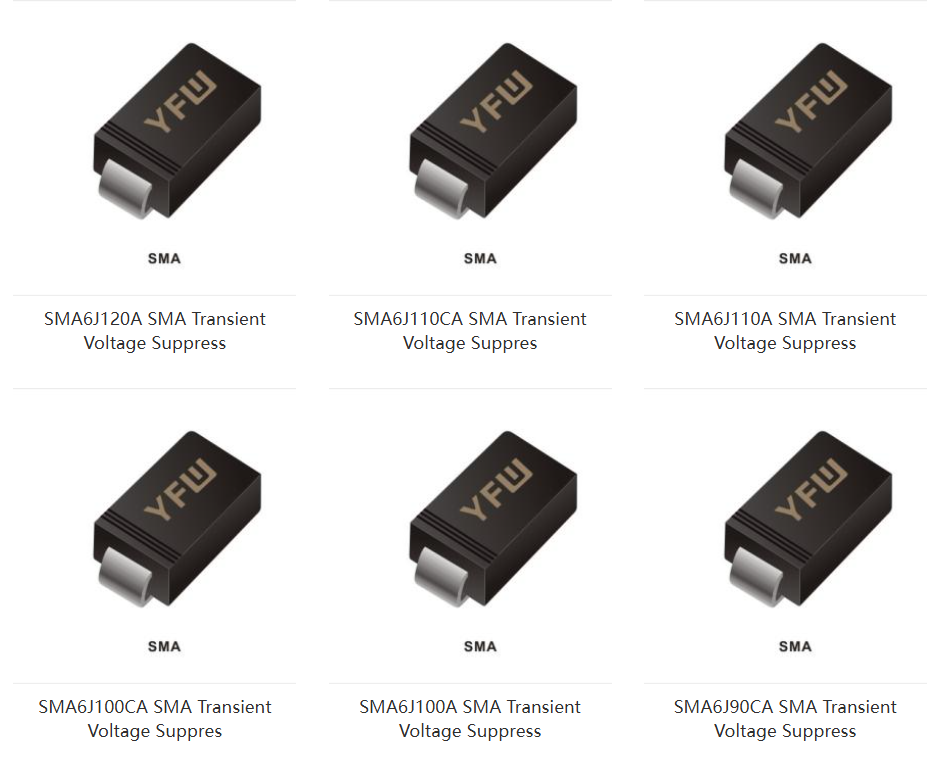When choosing TVS diodee, the following main factors should be considered:
The main results are as follows: (1) if the TVS is likely to withstand the impact of peak pulse voltage (surge voltage) from both directions, bipolar should be selected, otherwise unipolar should be chosen.
(2) the VC value of the selected TVS should be lower than the maximum voltage of the protected component. Vc is the voltage of the diode in the cut-off state, that is, the voltage passing through the TVS in the ESD impulse state, it can not be greater than the bearable limit voltage of the protected circuit, otherwise the device is in danger of being damaged.
(3) TVS should not be in the breakdown state under normal working condition, but preferably below VR. The appropriate TVS should be selected by comprehensively considering the requirements of VR and VC.
(4) if the more accurate surge current IPP is known, the VCIpp can be used to determine the power; if the approximate range of the IPP can not be determined, it is better to choose the TVS with higher power. PM is the maximum peak pulse power dissipation that TVS can withstand. Under the given maximum clamping voltage, the greater the power consumption PM, the greater the surge current bearing capacity; under the given power consumption PM, the lower the clamping voltage VC, the greater the surge current bearing capacity. In addition, the peak pulse power consumption is also related to pulse waveform, duration and ambient temperature.
(5) the transient pulse that the TVS can withstand is not repeated, and the pulse repetition rate specified by the device (the ratio of duration to interval time) is 0.01%. If repetitive pulses occur in the circuit, the accumulation of pulse power should be considered, otherwise the TVS may be damaged.
(6) for the protection of small current load, we can consciously increase the current limiting resistance in the line, as long as the resistance value of the current limiting resistance is appropriate, it will not affect the normal operation of the line, but the current caused by the current limiting resistance will be greatly reduced. However, it is possible to choose the TVS transistor with low peak power to protect the small current load line.
(7) the capacitance C is determined by the avalanche junction cross section of TVS, which is measured at a specific frequency of 1 MHz. The size of C is proportional to the current bearing capacity of TVS. Too large C will attenuate the signal. Therefore, C is an important parameter for data interface circuit to choose TVS. For the circuit with higher data / signal frequency, the greater the interference of the capacitance of the diode to the circuit, the greater the intensity of noise or attenuation signal. Therefore, it is necessary to determine the capacitance range of the selected device according to the characteristics of the circuit. In general, the capacitance of high frequency circuit should be as small as possible (such as LCTVS, low capacitance TVS, capacitance less than 3 pF), while for circuits with low capacitance requirements, the capacitance selection can be higher than 40pF.
(8) in order to meet the IEC61000-4-2 international standard, TVS diodes must be able to handle a minimum ESD shock of 8 KV (MB, contact) and 15 kV (BM, air). Some semiconductor manufacturers have used higher shock resistance standards on their products. For some portable device applications with special requirements, designers can select devices according to their needs.

Contact: Emma Tan
Phone: +8613650089053
E-mail: emma@yfwdiode.com
Add: No.9 Cuibi street,Nancheng,Zhang mutou town,Dongguan City,Guangdong Province